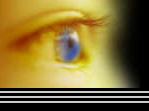|
~ Gateway
to the New World ~
The Bahamian island
of Guanahani, traditionally identified as San Salvador,
was Christopher Columbus' first landfall in the New
World. The original inhabitants of the island were the Lucayans, described by Columbus as a peace-loving people, beautiful
and generous of heart. Though Columbus claimed the island for Spain, the lack of gold here led the Spaniards to focus on settlements
elsewhere in the Caribbean. In 1629, Charles I
of England laid claim to the Carolinas and threw the Bahamas
in for good measure, a grand gesture that would weave together two of the major influences on the Bahamas'
development - England and the American South.
~ Spiritual
Adventurers and Marauding Pirates ~
In 1648,
William Sayles and his Eleutheran Adventurers (from the Greek word "Eleutheria," or "freedom") landed briefly in Nassau's harbor during their search for a place to establish a Puritan colony. They
then sailed south to today's Eleuthera Island, where a reef called
the Devil's Backbone wrecked the Adventurers
ship and chose their new home for them. The surviving Adventurers
were the first English settlers in the Bahamas.
Back
in Nassau (first established as Charles Town in 1666 and christened Nassau in 1695), wrecked
ships became a livelihood for the city's less religious minded settlers. If bad weather
and poor maps didn't bring enough salvage ashore, the "citizens" of this outlaw settlement would put lights on the reefs to
lure ships to their doom. None of this rogue activity was approved of by the faraway English
government - but the English did put a seal on approval on the beginnings of piracy.
During
the 17th century, England was constantly at war and the Royal Navy had its hands full, and so a Letter of Marque
was given to sea captains called "privateers," allowing them to attack enemy ships.
Piracy quickly became rampant, and in Nassau a "Privateer's
Republic" was established. Edward Teach, who wore flaming fuses in his
hair and beard and was better known as Blackbeard, declared himself Nassau's
magistrate. Calico Jack Rackham,
Anne Bonney, and Mary Read
were among many infamous pirates based here.
When
England signed treaties with its enemies, the privateers (who had far exceeded the limits of
their Letter of Marque!), officially became outlaws. In 1718 their "republic"
came to an end when England sent Governor Woodes
Rogers to Nassau, armed with three warships and the motto Expulsis Piratis ~ Resituta
Commercia (Pirates Expelled - Commerce Restored).
|

